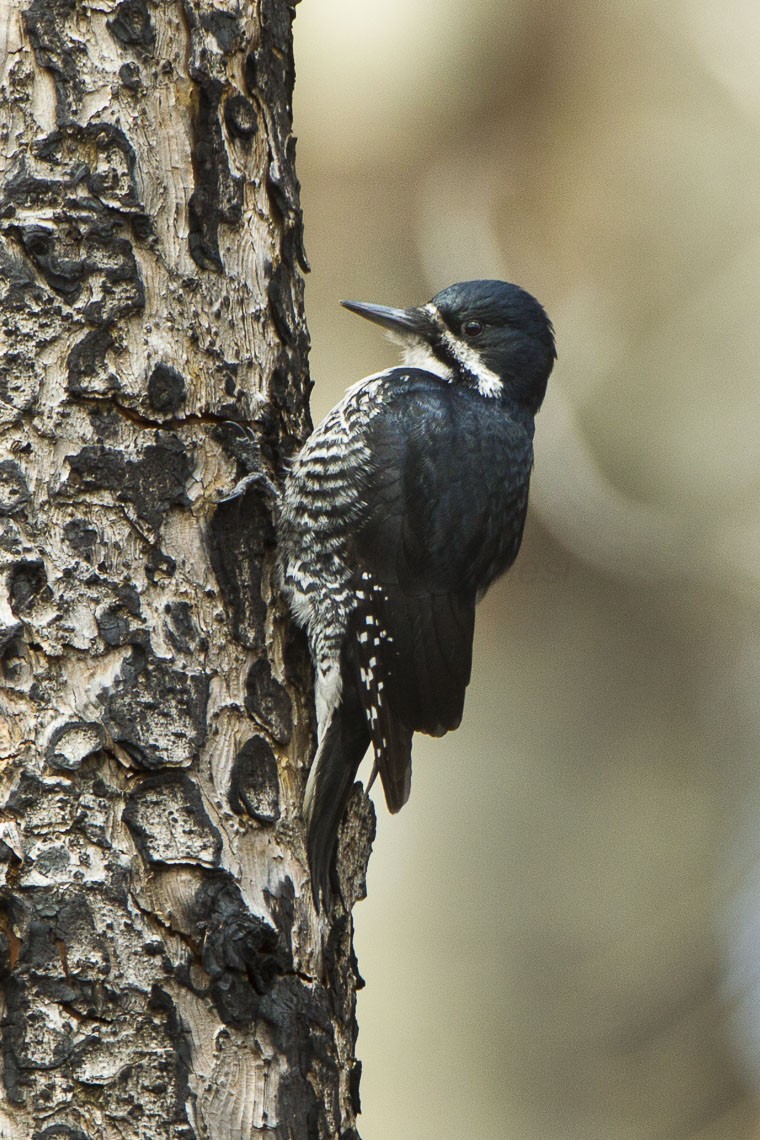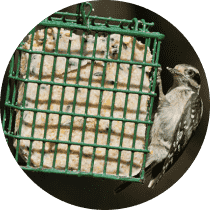Black-backed Woodpecker
A species of Three-toed woodpeckers, Also known as Arctic Three-toed Woodpecker Scientific name : Picoides arcticus Genus : Three-toed woodpeckers
Black-backed Woodpecker, A species of Three-toed woodpeckers
Also known as:
Arctic Three-toed Woodpecker
Botanical name: Picoides arcticus
Genus: Three-toed woodpeckers
Content
Description General Info
 Photo By Francesco Veronesi , used under CC-BY-SA-2.0 /Cropped and compressed from original
Photo By Francesco Veronesi , used under CC-BY-SA-2.0 /Cropped and compressed from original Description
The plumage of adults is black on the head, back, wings and rump. They are white from the throat to the belly; the flanks are white with black bars. Their tail is black with white outer feathers. There is an element of sexual dimorphism in the plumage, with the adult male possessing a yellow cap. Unlike all other woodpeckers except the related American and Eurasian three-toed woodpeckers, this species has three-toed feet. Measurements: Length: 9.1 in (23 cm) Weight: 2.1-3.1 oz (61-88 g) Wingspan: 15.8-16.5 in (40-42 cm) 
Size
24 cm (9.5 in)
Colors
Black
Yellow
Gray
White
Life Expectancy
5 years
Nest Placement
Cavity
Clutch Size
2 - 6 eggs
Nestling Period
22 - 26 days
Feeding Habits
Black-backed Woodpecker's diet primarily consists of wood-boring beetle larvae from Cerambycidae and Buprestidae families, and smaller bark and darkling beetle larvae. They forage on trunks of burned trees, excavating grubs from under bark or deep within wood using their long tongues, often focusing on a spot for an extended period. Occasionally, black-backed Woodpecker also feeds on insects found on fallen logs or the ground.
Habitat
Black-backed Woodpecker primarily inhabits boreal coniferous forests in North America, with a preference for recently burned areas where wood-boring beetles thrive. Found across varying altitudes in climates conducive to their prey-rich environments, black-backed Woodpecker favors woods composed of trees like Douglas-fir, ponderosa pine, and spruce. These habitats can include insect-infested deciduous forests and wooded bogs. They begin nesting in dead trees shortly after fires and remain in these suitable regions for up to eight years post-disturbance, with declining beetle populations dictating habitat viability.
Nest Behavior
Black-backed Woodpecker constructs new nests each spring with the male initiating excavation. Egg-laying follows completion, and both parents share in the care of eggs and young.
Nest Characteristics
Black-backed Woodpecker nests are excavated in dead or sometimes living trees, typically on the main trunk, 10-35 feet above ground. Entry is about 1.8 inches wide, with a cavity 4 inches wide and 8 inches deep, often lined with wood chips.
Dite type
Insectivorous
General Info
Feeding Habits
Bird food type
Bird Feeder Type

Suet Cage
Behavior
Black-backed Woodpecker exhibit a dynamic lifestyle, often traversing vast landscapes in pursuit of post-fire habitats ideal for nesting. These areas are home to them for multiple breeding cycles until the insects they feed on diminish. Their territorial range varies, fluctuating with food availability, and surprisingly, they can cohabit closely with other woodpecker species. Breeding seasons see black-backed Woodpecker engaging in multifaceted communication, employing calls and visual demonstrations for both courtship and defensive situations. These displays include notable postures and movements like bill raising, crest elevating, head swaying, tail fanning, and wing spreading, performed by both sexes, sometimes in tandem to challenge trespassers. Males may also showcase a distinct slow-wingbeat flight resembling a moth to display dominance, sometimes leading to physical confrontations. Parental duties are shared, with both sexes participating in incubation and chick feeding. Partnerships may extend beyond breeding seasons, with pairs potentially reuniting to procreate in subsequent years.
Species Status
Not globally threatened.
Scientific Classification
Phylum
Chordates Class
Birds Family
Woodpeckers Genus
Three-toed woodpeckers Species
Black-backed Woodpecker